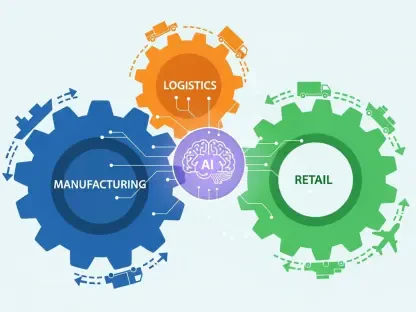As the marketing world braces for another transformative year, a recent report offers a striking glimpse into the forces poised to redefine brand strategies in 2026, highlighting the dynamic interplay between cutting-edge technology and the timeless need for human connection. With artificial intelligence (AI) rapidly reshaping consumer interactions and inclusivity becoming a non-negotiable pillar of brand relevance, marketers face both unprecedented opportunities and complex challenges. The insights point to a future where data-driven innovation must harmonize with authentic storytelling to capture consumer trust and loyalty. This evolving landscape demands a delicate balance, as brands strive to leverage technological advancements without losing sight of the emotional resonance that drives engagement. The following exploration delves into the critical trends shaping this journey, offering a roadmap for navigating the intersection of AI, creativity, and cultural shifts.
Technology as a Marketing Game-Changer
AI’s Transformative Role in Consumer Engagement
The rise of AI as a cornerstone of marketing strategy stands out as a defining trend for 2026, with tools like AI agents and algorithm-driven recommendations fundamentally altering how brands connect with audiences. A notable statistic reveals that nearly a quarter of AI users already depend on AI-powered shopping assistants, signaling a shift toward machine-influenced decision-making. This technology enables hyper-personalized experiences, tailoring interactions to individual preferences with unprecedented precision. However, the challenge lies in ensuring that these interactions retain a sense of authenticity, as consumers increasingly crave genuine connections even in digital spaces. Brands must integrate AI in ways that enhance rather than replace human elements, using it to deepen understanding of consumer behavior while maintaining emotional resonance. The focus for 2026 will be on embedding AI seamlessly into strategies, ensuring visibility through approaches like Generative Engine Optimization (GEO) to stand out in AI-generated content landscapes.
Expanding Horizons with Synthetic Data and Digital Twins
Beyond direct consumer engagement, AI’s influence extends to the realm of data innovation, with synthetic data and augmented audiences emerging as powerful tools for marketers in 2026. Synthetic data, created through simulations, allows brands to test scenarios and predict outcomes without relying solely on real-world inputs, offering a cost-effective way to refine campaigns. Similarly, digital twins—virtual replicas of consumer segments—enable deeper insights into behaviors and preferences, enhancing targeting accuracy. These technologies promise to revolutionize how marketers approach strategy, providing a sandbox for experimentation before real-world execution. Yet, the reliance on such tools necessitates high-quality, responsible data practices to avoid biases that could skew results. As investment in these areas grows, the emphasis will be on balancing technological precision with ethical considerations, ensuring that insights derived from artificial environments translate meaningfully to actual consumer interactions.
Human-Centric Strategies in a Digital Age
Inclusivity as a Core Marketing Principle
Amid the technological surge, inclusivity emerges as a vital component of effective marketing, reflecting a global demand for representation across diverse demographics in 2026. Brands are increasingly expected to authentically mirror the varied identities and experiences of their audiences, moving beyond tokenism to create campaigns that resonate on a profound level. This trend, often termed expansive marketing, underscores the importance of cultural sensitivity and genuine storytelling in building trust. Research indicates that brands embracing this approach can tap into broader markets, fostering loyalty among underrepresented groups who seek to see themselves reflected in advertising. The challenge lies in executing this vision with sincerity, ensuring that diversity is not just a checkbox but a deeply integrated value. Marketers must prioritize partnerships and creative input from diverse voices to craft messages that feel both inclusive and impactful.
Cultural Shifts and Consumer Priorities
Another pivotal aspect shaping marketing in 2026 is the evolving cultural and behavioral landscape, with trends like ‘Treatonomics’ capturing a growing consumer inclination toward small indulgences for optimism and joy. Surveys suggest that a staggering 90% of Australians are likely to seek out these minor treats in the coming year, reflecting a broader desire for personal well-being over material wealth. Additionally, studies show a shift in priorities, with time valued more highly than money by a significant portion of the population. Brands that align with these values, offering accessible moments of delight and emphasizing value for money, stand to gain a substantial competitive edge. This cultural pivot also highlights the rise of micro-communities on social media, where authenticity drives engagement. Marketers must adapt by crafting targeted, meaningful content for these niche groups, while ensuring consistency across channels to reinforce brand identity in a fragmented digital space.
Balancing Innovation with Authenticity for Future Success
Reflecting on the insights from the comprehensive 2026 marketing trends analysis, it becomes evident that the past year laid a critical foundation for blending technology with human-centric approaches. Marketers who navigated the rapid adoption of AI while prioritizing authentic connections saw significant strides in consumer trust and engagement. The emphasis on inclusivity reshaped how brands communicated, with those who authentically represented diverse audiences gaining loyalty and relevance. Cultural trends, such as the pursuit of small joys, also played a key role in guiding campaign strategies that resonated deeply. Looking ahead, the actionable step is to continue investing in high-quality data and experimentation, ensuring AI tools like GEO are leveraged to maintain visibility without compromising brand uniqueness. Additionally, fostering creativity through inclusive narratives and aligning with consumer values will be essential. Brands should also explore tactical opportunities in Retail Media Networks and creator content, using these platforms to reach audiences effectively while staying grounded in a distinct identity for sustainable growth.









